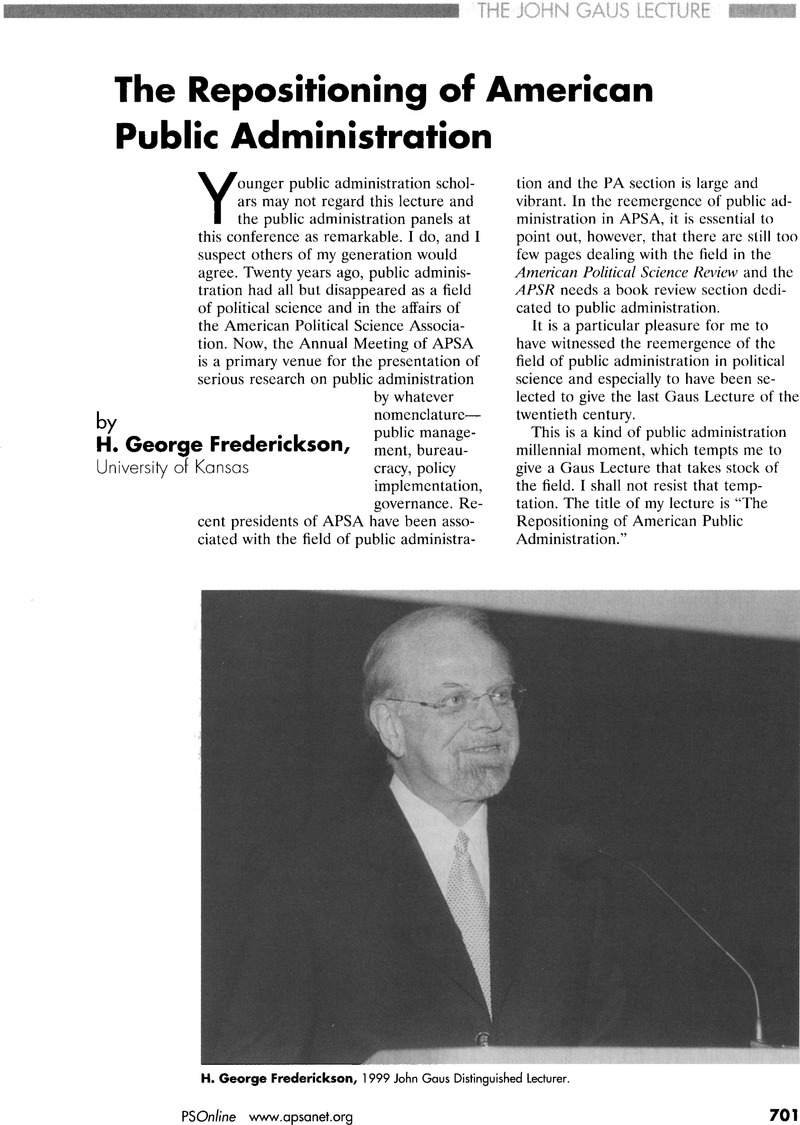Crossref Citations
This article has been cited by the following publications. This list is generated based on data provided by Crossref.
Denters, Bas
Van Heffen, Oscar
Huisman, Jeroen
and
Klok, Pieter-Jan
2003.
The Rise of Interactive Governance and Quasi-Markets.
Vol. 8,
Issue. ,
p.
3.
Agranoff, Robert
and
McGuire, Michael
2003.
Inside the Matrix: Integrating the Paradigms of Intergovernmental and Network Management.
International Journal of Public Administration,
Vol. 26,
Issue. 12,
p.
1401.
Koht, Harald
2003.
New Public Management in Latvia: Variations in openness to customer requests in public agencies.
Journal of Baltic Studies,
Vol. 34,
Issue. 2,
p.
180.
Olsen, Johan P.
2004.
Citizens, Public Administration and the Search for Theoretical Foundations.
PS: Political Science & Politics,
Vol. 37,
Issue. 1,
p.
69.
Denters, S. A. H.
and
Rodenhuis, W. K. F.
2005.
Metropolitanization and Political Change.
p.
191.
Meek, Jackw
and
Newell, William H.
2005.
Complexity, Interdis Ciplinarity and Public Administration: Implications for Integrating Communities.
Public Administration Quarterly,
Vol. 29,
Issue. 3,
p.
321.
Osborne, Stephen P.
2006.
The New Public Governance?1.
Public Management Review,
Vol. 8,
Issue. 3,
p.
377.
Sager, Fritz
2006.
Policy coordination in the European metropolis: A meta-analysis.
West European Politics,
Vol. 29,
Issue. 3,
p.
433.
2006.
Elements of Effective Governance.
Vol. 126,
Issue. ,
p.
149.
2006.
Elements of Effective Governance.
Vol. 126,
Issue. ,
p.
213.
Brewer, Gene A.
Neubauer, Bruce J.
and
Geiselhart, Karin
2006.
Designing and Implementing E-Government Systems.
Administration & Society,
Vol. 38,
Issue. 4,
p.
472.
Kim, Junki
2006.
Networks, Network Governance, and Networked Networks.
International Review of Public Administration,
Vol. 11,
Issue. 1,
p.
19.
Andresani, Gianluca
and
Ferlie, Ewan
2006.
Studying governance within the British public sector and without.
Public Management Review,
Vol. 8,
Issue. 3,
p.
415.
Morçöl, Göktug
and
Patrick, Patricia A.
2006.
Business Improvement Districts in Pennsylvania: Implications for Democratic Metropolitan Governance.
International Journal of Public Administration,
Vol. 29,
Issue. 1-3,
p.
137.
Crozier, Michael
2007.
Recursive Governance: Contemporary Political Communication and Public Policy.
Political Communication,
Vol. 24,
Issue. 1,
p.
1.
de Boer, Harry F.
Enders, Jürgen
and
Schimank, Uwe
2007.
Governance and Performance of Education Systems.
p.
35.
Sæbø, Øystein
Rose, Jeremy
and
Skiftenes Flak, Leif
2008.
The shape of eParticipation: Characterizing an emerging research area.
Government Information Quarterly,
Vol. 25,
Issue. 3,
p.
400.
Zeemering, Eric
and
Durham, Roger
2008.
The Facilitative Leader in City Hall.
Vol. 20085728,
Issue. ,
p.
189.
Tang, Shui-Yan
and
Zhan, Xueyong
2008.
Civic Environmental NGOs, Civil Society, and Democratisation in China.
The Journal of Development Studies,
Vol. 44,
Issue. 3,
p.
425.
Matkin, David S. T.
and
Frederickson, H. George
2009.
Metropolitan Governance: Institutional Roles and Interjurisdictional Cooperation.
Journal of Urban Affairs,
Vol. 31,
Issue. 1,
p.
45.



